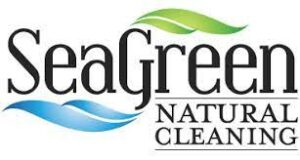
Image by PublicDomainPictures from Pixabay
This week while I was cleaning a clients house, she asked me to use her furniture polish. I bring a long all my own cleaning products that are natural. I said yes to using her product on one piece of furniture. It did smell nice, and this is how I decided on this weeks blog.
What is the fragrance really in these consumer products, and can they cause harm?
I started doing my research and being an investigator for my followers to see what I could come up with that would be informative and helpful.
What does clean smell like? Many of us would say lemony or pine-scented, floral or lavender. These are the scents used by manufacturers to make their cleaners smell pleasant rather than like their chemical ingredients. Fabric softeners and laundry detergents are among the most highly scented products, imparting fragrance to clothing and other laundry. But nearly all other cleaners, including dishwashing liquids, floor cleaners, furniture polish and bathroom cleaners, typically contain fragrance too.
While these scents may seem natural, in most cases they are created using complex blends of chemicals that can cause health effects. During use, fragrance and other chemicals can “volatilize
,” or become airborne and are easily inhaled. What’s more residues from laundry products remain on clothing and linens after washing. These residues can be inhaled or can irritate skin.
Since good smells sell, fragrances are also used to cover up offensive odors that products made from chemicals can have. Barbara Wilke president of the board for the Environmental Health Network (EHN) in California, notes that fragrances are added to poisonous pesticides “to make them smell like perfume!” That may be stretching it, but floral scents may make pesticides less unpleasant and, therefore, more likely to be used.
Today, most fragrances are synthesized, primarily from petroleum products, About 3,000 chemicals are used in the fragrance industry, but very few of these have been tested for their cancer-causing potential or other health effects. The use of fragrances in an increasing number of products also increases the chances that someone will develop skin irritation or an allergic reaction. Allergic reactions to fragrances are on the rise, increasing from 9 percent to about 12 to 13 percent dermatitis patients over the last decade, according to DR. Donald Belsito, a dermatologist at the University of Kansas Medical Center (as quoted in a February 2002 MSNBC article “Scents and Sensitivities.”)
Ingredients that Smell of Danger
A single fragrance usually contains multiple chemicals-as few as 10 chemicals or as many as several hundred. One study conducted at the University Of California, San Diego, showed that mixing multiple chemicals together in a fragrance brew can actually make each individual chemical more potent, so that less was needed to cause a sensory reaction. The researchers also discovered that fragrances don’t just stimulate our olfactory nerve, which identifies scent. The chemicals can also stimulate other nerves that perceive irritation. And they’ve found that as exposure time to a fragrance increases, irritation grows, even though the scent itself may seem to diminish.
For most people, fragrances in many products are unlikely to cause symptoms when used alone or in a well-ventilated area, but using a product excessively or many products together can cause the chemicals to concentrate in the air to levels that become bothersome, especially to children because their airways are more sensitive than those of adults.
Limonene, a lemon or orange scent used in many products, as well as other aromatic compounds found in pine and other essential oils can cause difficulty breathing. Solvents used in cleaners, such as ethanol and styrene, can cause headaches, fatigue and dizziness. Styrene is a possible human carcinogen. Phthalates, used to lengthen the duration of a scent are suspected hormone disruptors.
No “Scents” in Labeling
Just to make things more confusing, it turns out that scent formulas are often protected as private information by law. That means, you’ll often see the generic term “fragrance” or “perfume” on the label without information about the actual chemicals used and the amounts.
Even products labeled “fragrance -free” may, in fact, contain fragrance! According to FDA Consumer, the term “fragrance-free” implies that a cosmetic product has no detectable odor, but it may contain fragrance used to mask a bad-smelling raw material. If chemicals are used to mask odors, however, the manufacturer is required to indicate “fragrance” in the listing of ingredients on the label.
“Organic” or “Natural”
Many organic cleaning product companies list in full ingredients voluntarily. A product may say “organic” or “natural” but there is no legal requirement that the company disclose the chemical ingredients of its fragrance.
Regulations?
The fragrance industry is, by and large, self-regulated. That is, the International Fragrance Association (IFRA), an organization that receives funding from the fragrance industry and represents its interests worldwide, provides guidelines for it members on the use and safety of fragrances. IFRA guidelines are based on research conducted by the Research Institute for Fragrance Materials (RIFM), another industry-funded organization that tests raw materials used in the fragrance industry. The guidelines are not examined or overseen by any government agency. Choosing to adhere to IFRA’s guidelines is purely voluntary, and the FDA or an independent third party rarely conducts tests on fragrance ingredients.
The U.S. Consumer Product Safety Commission (CPSC) is the only agency that has any regulatory power over household cleaners except when they contain antimicrobial agents. (Antimicrobials, such as disinfectants, are considered pesticides and are regulated by the U.S. Environmental Protection Agency.) CPSC regulates household cleaners based on the following “hazard categories”, toxic, flammables, caustic, irritant, sensitizer, carcinogen, nerve or reproductive toxin. And though many fragrance ingredients fit one or more of these categories, CPSC does not consider fragrance ingredients specifically when determining a cleaner’s hazard level, nor is the agency concerned with the multiple and cumulative exposures of fragrances that occur in most homes due to the use of numerous cleaning products.*
The government also does not regulate the term “fragrance-free”, according to a CPSC spokesperson. It is purely an industry invention. Many companies offer so-called “fragrance-free” products as an alternative to consumers who object to scent. However, the label is misleading. A product labeled “fragrance-free” may still contain fragrance ingredients, even if the scent cannot be easily detected. That’s because fragrance may be needed to mask the unpleasant odor of some chemical ingredients.
The best way to endure that your cleaners don’t have any unwanted fragrance chemicals is to make them yourself, using ingredients in your kitchen. For example, baking soda works perfectly well to scrub out your bathtub. More homemade recipes can be found at: www.seagreennatural.com
* CPSC spokesperson used the logic that any one cleaner has only a small amount of fragrance, making it harmless. When pressed about the fact that homes generally contain multiple cleaners and therefore multiple fragrances, he pointed to CPSC consumer education on indoor air quality.
“Happy and Safe Cleaning”
Free Estimate PDF
Let's clean house!
Call 203-710-3188 today!

